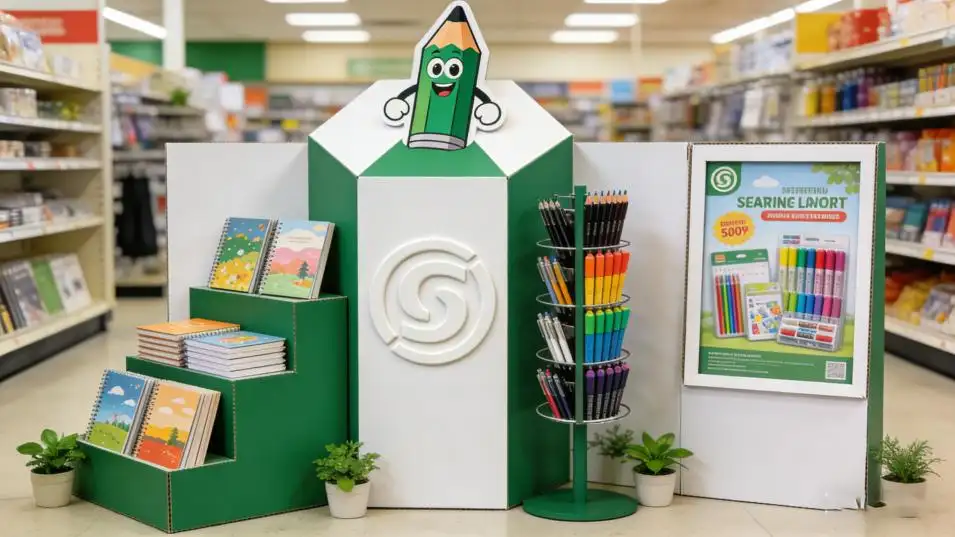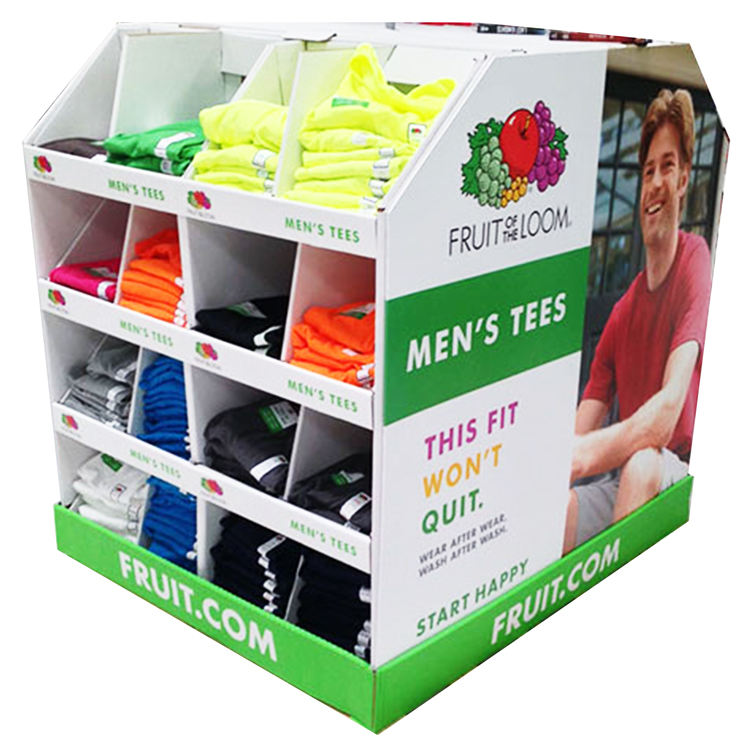Struggling to get your products noticed in a crowded store? Without a prime spot, great products get lost, leading to missed sales. Sidekick displays offer a smart way to capture attention.
A Sidekick, also known as a PDQ (Pretty Darn Quick) or Power Wing display, is a compact cardboard unit that hangs off the side of an endcap or main aisle shelving. Retailers use it to promote impulse buys, new products, or sale items right in the customer's line of sight.
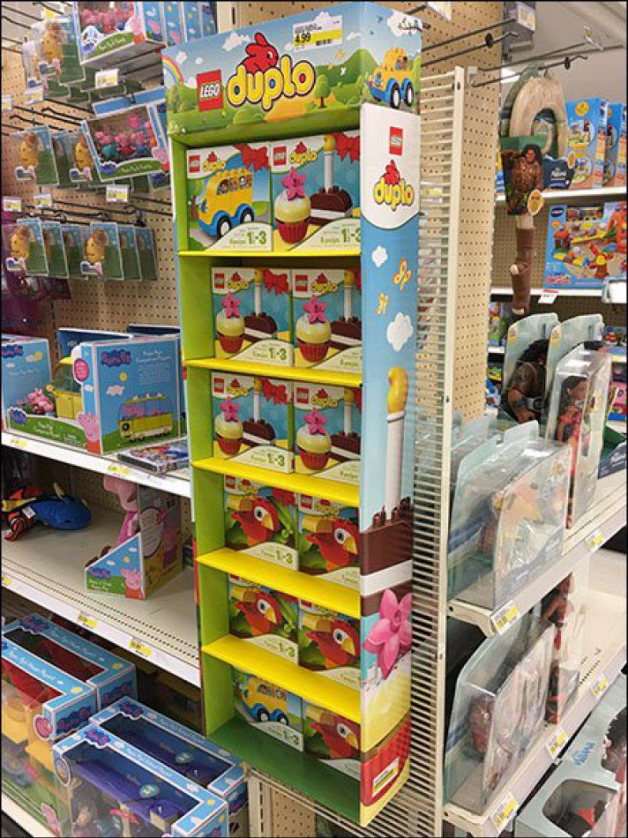
Now that you know what a Sidekick display is, you might be curious about what makes it so effective in a busy store. This type of display is more than just a piece of cardboard; it's a strategic tool. So let's explore the key benefits and design secrets that can make a real difference for your brand. Understanding these details will help you use them to your full advantage.
What Are the Main Advantages of Using a Sidekick Display?
You need a display that is both cost-effective and powerful. But traditional displays can be bulky and expensive, eating into your marketing budget. Sidekick displays provide a high-impact, low-cost solution.
The main advantages are increased visibility at eye level, encouraging impulse purchases, cost-effectiveness, and versatility. They place products directly in high-traffic zones without needing dedicated floor space, maximizing your sales potential with minimal investment.
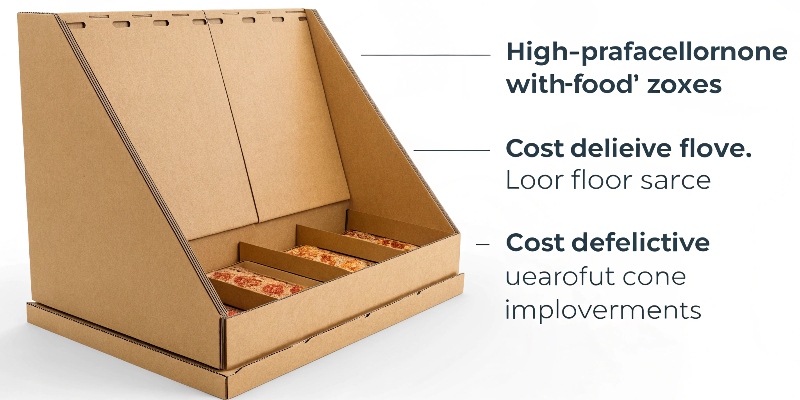
Based on my 16 years in this industry, the power of a Sidekick display lies in its simplicity and strategic placement. Let’s break down why these displays work so well and how they compare to other options.
Maximizing Visibility at Minimal Cost
Sidekick displays are typically made from corrugated cardboard. This makes them lightweight and inexpensive to produce and ship. Unlike large, permanent fixtures, they don't require a huge budget. More importantly, they hang on existing endcaps or shelving. This puts your product in some of the most valuable real estate in the store—the main aisles where every shopper passes. I remember a client selling small electronic gadgets. We moved them from a crowded inline shelf to a Sidekick display on a main aisle endcap. Their sales jumped 40% in just the first week. That shows the power of prime placement.
Driving Impulse Purchases
These displays are perfect for what we call "grab-and-go" items. Think about products like candy, batteries, lip balm, or small toys. Customers don’t always plan to buy these things. But when they see them conveniently placed while they are waiting in line or walking down an aisle, they are much more likely to add them to their cart. The display puts the product right at their fingertips and makes the decision to buy an easy one.
Here is a quick comparison to put it in perspective:
| Display Type | Footprint | Cost | Best Use Case |
|---|---|---|---|
| Sidekick (PDQ) | Zero floor space | Low | Impulse buys, promotions |
| FSDU (Floor Display) | Medium | Medium-High | New product launches |
| Counter Display | Small | Low-Medium | Checkout impulse items |
| Pallet Display | Large | High | Bulk items, high volume |
How Do You Design an Effective Sidekick Display?
Your current display isn't catching the shopper's eye. A poorly designed display is a waste of money and a missed opportunity, easily blending into the background. An effective design must be eye-catching.
To design an effective Sidekick, focus on bold graphics that match your brand. Ensure the structure is strong enough to hold your products. Use a clear call-to-action and make the product easy to grab. It has to stand out from the main shelving it's attached to.
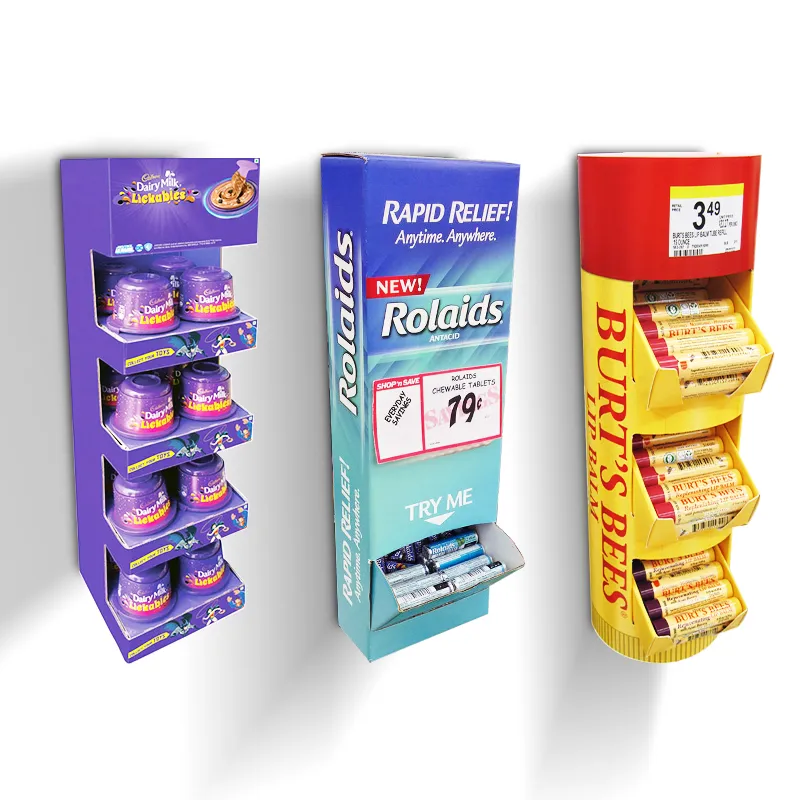
A great Sidekick display is a perfect mix of art and engineering. Over the years, I've seen some amazing designs and some that failed spectacularly. The difference always comes down to a few key principles. This is where a skilled designer like Peter, who I mentioned earlier, becomes invaluable. He knows how to balance creativity with the practicalities of a retail environment.
Structural Integrity is Key
The first rule is that the display must not fail. I once worked with a designer who was brilliant with graphics but was new to structural design. He designed a beautiful Sidekick for a line of small, bottled drinks. It looked amazing in the computer rendering. But in the store, it buckled under the product's weight within an hour. We had to quickly add reinforced supports to the design. It was a great lesson for him and a reminder for me: looks mean nothing without a solid foundation. You must test the display with the actual product weight before you go into full production.
Graphics That Grab Attention
A shopper gives you about three seconds of their attention. Your graphics need to work fast. Use your brand’s colors in a bold way. High-contrast images and simple, large fonts are crucial. The message should be about one thing: what the product is or what the offer is. Don't clutter it with too much text or too many images. A clean, striking design will always beat a busy one.
The "Shop-ability" Factor
Finally, think about the customer's experience. How easy is it for them to take a product from the display? I’ve seen displays with flaps or pockets that make it hard to grab an item. This creates friction and can cost you a sale. The product should be presented openly and be easy to remove. The goal is to make the purchase seamless and effortless.
What Are the Best Products to Showcase in a Sidekick Display?
You're not sure which of your products will perform best in a Sidekick. But choosing the wrong product can lead to wasted effort and poor sales, making the entire display ineffective.
The best products for a Sidekick are typically small, lightweight, and encourage impulse purchases. Think about items that shoppers might not have on their list but will grab when they see a good deal.
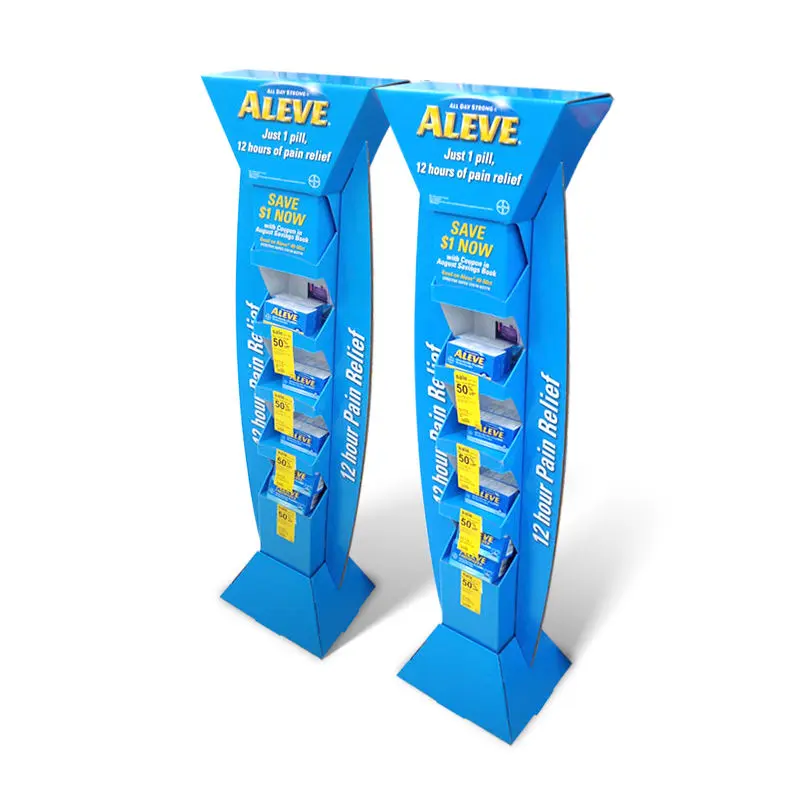
Choosing the right product is just as important as the design of the display itself. Not everything belongs in a Sidekick. Based on my experience helping hundreds of clients, a clear pattern has emerged for what works best. The key is to think from the shopper's perspective.
The Impulse-Buy Category
This is the sweet spot for Sidekick displays. These are items people don't actively seek out but buy on a whim. In my 16 years of experience, products under $10 do exceptionally well here. Think about snacks, beverages, socks, phone chargers, hand sanitizer, and small toys. These items have a low barrier to purchase. The customer sees it, wants it, and drops it in the cart without much thought. The convenience of the placement is what drives the sale.
New Product Launches and Promotions
Do you have a new product you want people to notice? A Sidekick can act as its own little billboard. It physically separates the new item from its competitors on the main shelf. This separation draws the eye and signals that this product is special. The same logic applies to promotions. A bright red or yellow display with "SALE" or "2 for 1" is hard to ignore. It creates a sense of urgency and highlights the value for the shopper.
Complementary Cross-Selling
This is a very smart strategy. Think about what else is sold in the aisle. Then, use a Sidekick to offer a complementary product. A classic example is placing a Sidekick display of batteries in the electronics or toy aisle. Another great one is selling salsa and dips on a Sidekick attached to the chip aisle. You are solving a problem for the shopper before they even realize they have it.
Here’s a simple table to guide your product choices:
| Product Category | Suitability | Rationale |
|---|---|---|
| Snacks & Candy | High | Classic impulse items, low cost. |
| Batteries | High | Perfect for cross-selling in electronics/toy aisles. |
| Health & Beauty | High | Travel sizes, lip balm, and hand sanitizer work well. |
| Heavy Items (e.g., canned goods) | Low | Risk of structural failure, not an impulse category. |
Conclusion
Sidekick displays are powerful tools for boosting visibility and sales. By focusing on smart design, strategic product choice, and solid construction, you can capture customer attention effectively and affordably.



